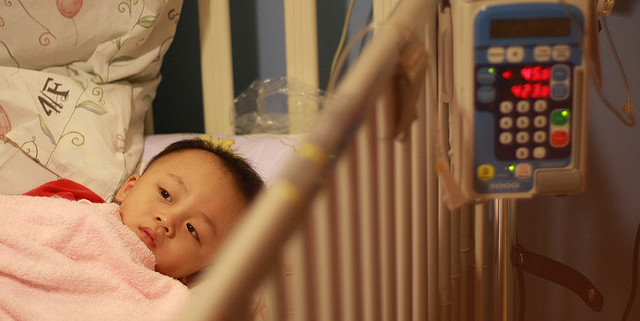How Common are Birth Injuries and Birth Defects?

The terms “birth injury” and “birth defect” cover a wide range of potential issues that can arise during pregnancy and delivery. They’re scary words — you want your new arrival to be perfectly healthy and happy and the specter of potential health problems can cause you a lot of stress. What are birth injuries and birth defects? And just how common are they?
Contents
How different is a birth injury from a birth defect?
The major difference is in the timing. A birth defect is damage or abnormal development that occurs while your little one is developing in the womb. The first thing that comes to mind is probably a genetic mutation, but toxins and dangerous medications can also cause this type of damage during development. A birth injury, or “birth trauma,” happens just before, during, or just after delivery. It may be caused by a difficult labor, a doctor’s error, or a number of other factors.
Whether your child is affected by an injury or a defect is most relevant in the legal context. For example, pharmaceutical companies may be liable for the harm to your little one if it was caused by an unsafe drug while doctors may be liable for improper medical care.
Common Birth Injuries
How common are birth injuries? It’s difficult to nail down a precise statistic — different studies give different answers. The CDC reported about 3 birth injuries per 1,000 live births in 2002, the latest year in which the CDC collected data on the subject. Other studies have found the rate to be as much as 10 times higher — about 30 per 1,000 live births. The good news is that this is still a very low rate of occurrence, at less than 3%. Of course, even that low percentage works out to a lot of babies — anywhere from 10,000 to 100,000 per year.
Remember that the baby isn’t the only one at risk for injury during delivery. The mother is also at risk for “obstetrical trauma.” The Healthcare Cost and Utilization Project (HCUP) tracks data on injuries to mothers during labor and delivery. Interestingly, mothers with private insurance and mothers who live in wealthy areas are most at risk for obstetrical trauma. This is probably because their doctors are more likely to use aggressive techniques such as forceps and vacuum suction to move delivery along. In 2006, the rate of injuries in device-assisted deliveries was 160 per 1,000 live births — that’s 16%!
The vast majority of deliveries will go smoothly with no trauma to mother or child. In addition, the most common reported issues are injuries to the scalp and broken clavicles, which typically heal normally on their own and cause no long-term effects.
Unfortunately, not all birth traumas are minor. Some cause brachial plexus injuries, damage to the cranial nerve or spinal cord, or asphyxiation, all of which can lead to permanent disabilities.
Common Types of Birth Defects
Birth defects are more common than birth injuries. The CDC reports that 1 in 33 children has a birth defect. Heart defects are the most common, followed by Down syndrome and cleft lips or palates.
As with birth injuries, birth defects can be minor or severe. A heart defect may never cause your child any problems or it may require major surgery.
Birth defects may be caused by genetic mutations, but can also be caused by drugs or other substances that make their way from the mother’s bloodstream to the baby. Tobacco and alcohol can cause abnormal development, but so can many prescription medications. In fact, very few drugs are tested to be safe for pregnant women. Unfortunately, pharmaceutical companies do not always make that clear and may recommend drugs that turn out to cause dangerous birth defects.
How to Prevent Birth Injuries and Birth Defects
Sometimes, a birth injury or birth defect is unavoidable. There is no way to control genetic mutations and some deliveries are simply difficult, making injury to mother and child more likely. However, there are some things you can do to improve your odds.
1. Take folic acid or folate. This vitamin has been shown to decrease the likelihood that the child will develop a neural tube defect such as spina bifida.
2. Do not drink, smoke, or take recreational drugs during pregnancy. Everything you take in can get to your baby. While your liver and kidneys are mature and can handle the toxins, your little one cannot and may be at risk for Fetal Alcohol Spectrum Disorders and other birth defects.
3. Eat pregnancy-friendly foods. Some types of food carry bacterial and viral infections that aren’t a threat to adults but can be very dangerous for developing babies. These infections can lead to brain damage and other health problems.
4. Take care of yourself. Exercise regularly (and safely) and carefully monitor any health conditions, such as diabetes. The healthier you are, the safer your little one is.
5. Work closely with your doctor if you need to take any medications. Your doctor may recommend stopping or changing your medications if you are pregnant or may become pregnant in order to avoid the risk of birth defects. Do not stop taking any medication without first consulting your doctor.
6. Be completely honest with your doctor. Many maternal health conditions can affect the baby. For example, a herpes infection in the mother can turn into a deadly infection for the baby. Give your doctor a complete and accurate picture of your health so you can consider your options for making delivery as safe as possible.
The healthier you are while pregnant, the safer it is for your baby. Take your vitamins, exercise, and get ready for the big day! #pregnancy
Tweet
What to Do If Your Child is Injured By a Doctor or Drug
If your baby has a birth injury, the first step is getting your little one treated. Next, you’ll want to learn as much as you can about the birth injury so you know what to expect. Finally, be aware that you may have legal recourse. If the injury was caused by a doctor or by a drug, you may be entitled to compensation for your child’s medical expenses, ongoing health costs, pain and suffering, and more.
Contact the Safe Birth Project to learn more about your legal options. No amount of compensation can undo the injury to your child, but it can ease the financial burden of medical costs and help you take the best possible care of your little one.
Image Credit and License








Leave a Reply
Want to join the discussion?Feel free to contribute!